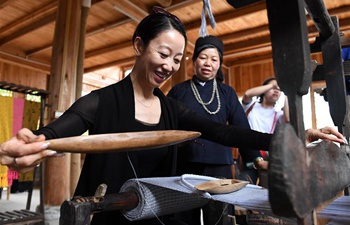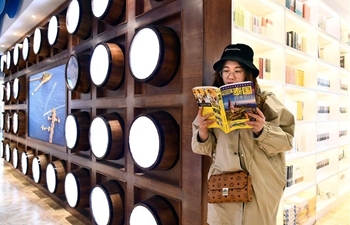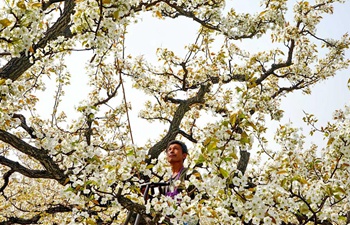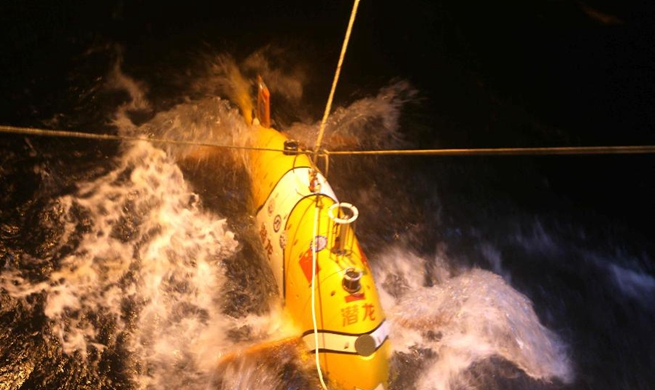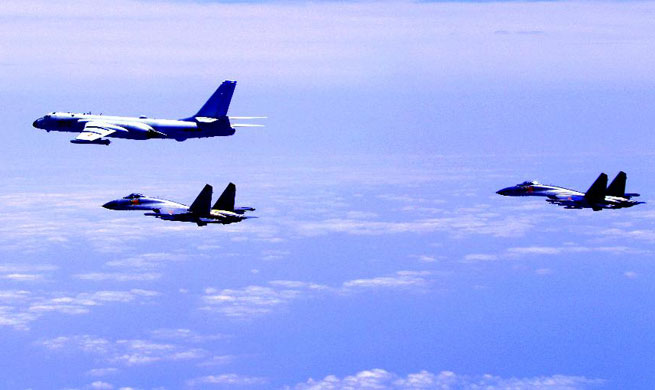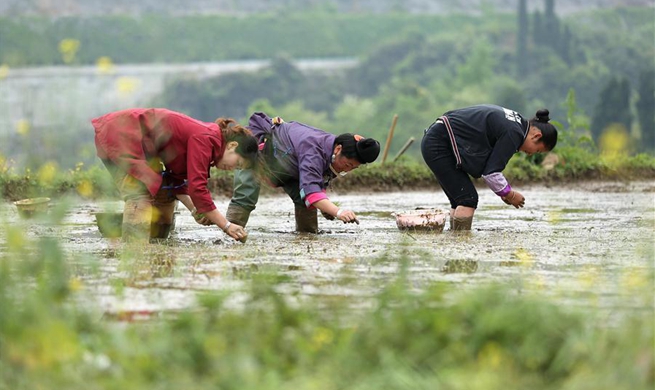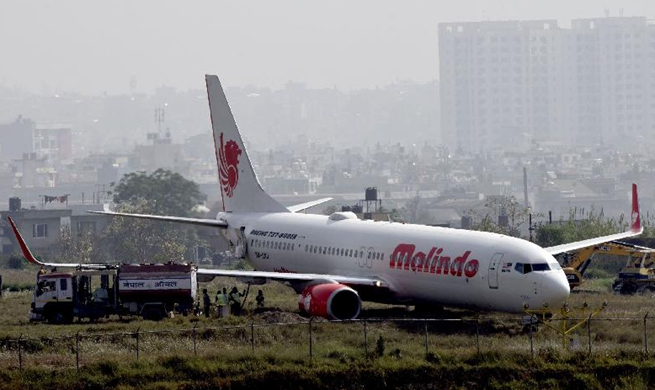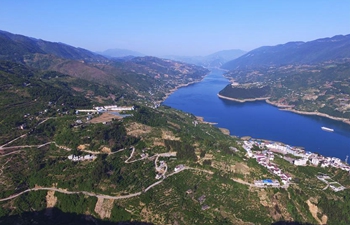HAIKOU, April 20 (Xinhua) -- Battery carts carry tourists around Wenchang space launch center on the Chinese island province of Hainan. A 130 yuan (20.7 U.S. dollars) ticket allows them to view the launch and operation control center, the vertical assembly and test building, as well as a launch tower.
Palm-fringed Hainan is a top destination for tourists because of its tropical weather and beautiful scenery. The launch center at the beachside of Wenchang has made the small city famous among space-lovers.
"We came to Wenchang especially for this space launch center," said Huang Dahua, a retiree from landlocked Sichuan Province. He and his wife are members of the tour group.
The Wenchang center is the fourth space launch site in China, following three in Jiuquan, Xichang and Taiyuan, and the only launch center near the sea. It is used to dispatch satellites, large space stations and deep-space probes.
In June 2016 the center held its first launch, marking a new-generation launch site designed and built by China.
Yi Ziqian, former deputy commander for the maiden launch of the Long March-5 rocket, said Wenchang is the largest and most advanced launch center, with the best launch capacity in China.
The center features a 99-meter-tall assembly and testing facility, where rockets can be assembled and tested vertically, as well an 81-meter-tall steel door, Asia's largest.
"It's magnificent. I feel excited seeing such an enormous achievement when I'm still alive," said Huang, 83.
Pan Detian, with Wenchang tourism investment company, said since it opened to the public in March 2016, the launch center has seen 300,000 visitors. The company operates launch center tours.
China is building its aerospace strength. At the Wenchang center, the country sent its first cargo spacecraft Tianzhou-1 into space on April 20, 2017, another step toward its goal of putting a space station into orbit around 2022.
While the country explores space, Wenchang has been seeking to develop tourism related to aerospace, benefiting local farmers.
Seven kilometers away from the center, a small fishing village with 10-plus households has become a cluster of family inns. The per capita annual income there surged from 19,000 yuan in 2016 to 29,000 last year.
Lin Chunxue, 45, is planning to buy a car. Since she and her family opened a hostel in 2011, their income has risen 10 times to 100,000 yuan a year. The inn receives as many as 20 tables of guests per day.
Lin said the village surroundings have also changed a lot.
"Garbage and pig excrement used to be everywhere, and now the clean and beautiful village landscape is even better than the cities," she said. "I'd rather stay in the countryside than move to the cities."
According to a government plan, Wenchang City will develop six sectors related to aerospace, including technology exhibitions and trades, and cultural and educational tourism.
Space will be referenced in every aspect of tourism, from food and accommodation, to commodities and transport.
In the future, villagers will provide vegetables grown from seeds developed through space experiments. There will also be space-themed amusement parks, souvenirs and hotels.
Wenchang mayor Wang Xiaoqiao said the city would introduce more hi-tech industries related to aviation, aerospace, as well as satellite applications, and set up a space-themed park.
The park covering 11.3 hectares will include facilities to simulate life in space, such as an astronaut living hall, an AR/VR discovery hall and a 4D cinema, according to Wang.







